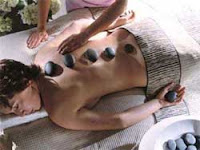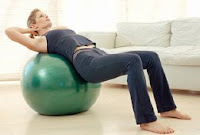Spine. 2009 Jun 15; 34(14): 1436-40Dundar U, Solak O, Yigit I, Evcik D, Kavuncu VSTUDY DESIGN: This study was a prospective, randomized, controlled study. OBJECTIVE: To compare the effectiveness of aquatic exercise interventions with land-based exercises in the treatment of chronic low back pain (CLBP). SUMMARY OF BACKGROUND DATA: Land-based exercise and physiotherapy are the main treatment tools used for CLBP. Clinical experience indicates that aquatic exercise may have advantages for patients with musculoskeletal disorders. METHODS: A total of 65 patients with CLBP were included in this study. Patients were randomly assigned to receive aquatic exercise or land-based exercise treatment protocol. Aquatic exercise program consisted of 20 sessions, 5 x per week for 4 weeks in a swimming pool at 33 degrees C. Land-based exercise (home-based exercise) program were demonstrated by a physiotherapist on one occasion and then they were given written advice The patients were assessed for spinal mobility, pain, disability, and quality of life. Evaluations were performed before treatment (week 0) and after treatment (week 4 and week 12). RESULTS: In both groups, statistically significant improvements were detected in all outcome measures (except modified Schober test) compared with baseline. However, improvement in modified Oswestry Low Back Pain Disability questionnaire and physical function and role limitations due to physical functioning subpart of Short-Form 36 Health Survey were better in aquatic exercise group (P < 0.05). CONCLUSION: It is concluded that a water-based exercises produced better improvement in disability and quality of life of the patients with CLBP than land-based exercise.



